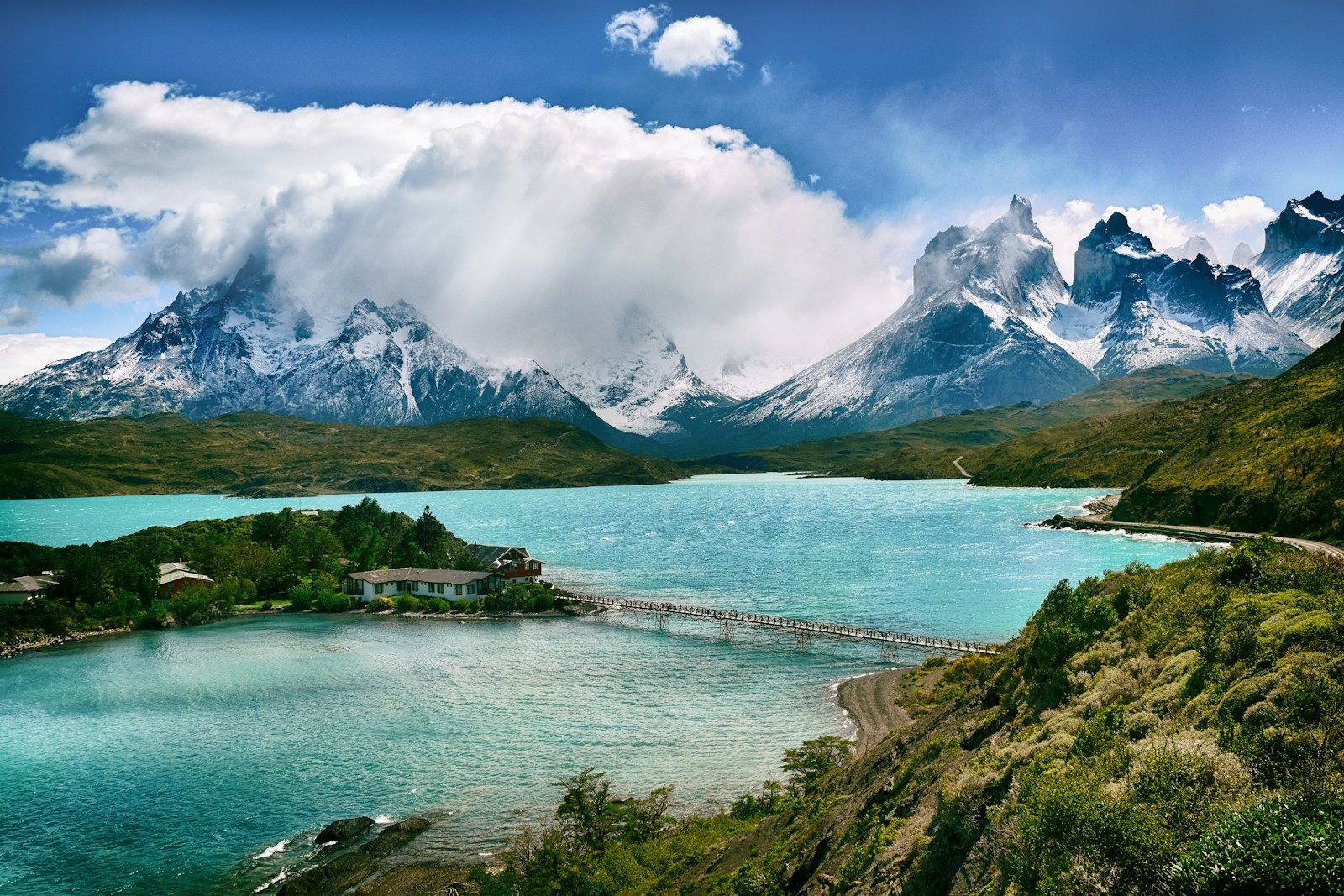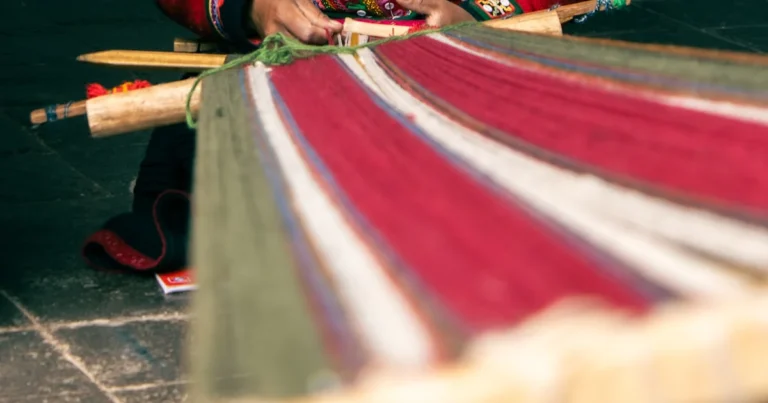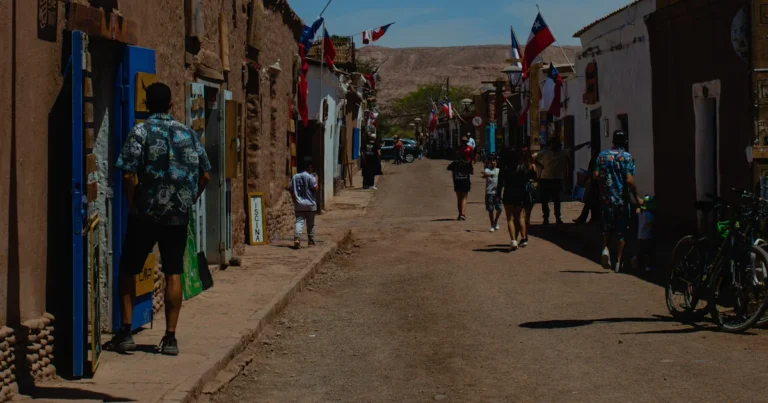Support our educational content for free when you purchase through links on our site. Learn more
10 Unique Cultural Experiences to Have in Chile 🇨🇱 (2025)
Picture this: you’re standing in a bustling plaza in Santiago, the scent of freshly baked marraqueta bread mingling with the distant strum of a guitar playing Cueca, Chile’s national dance. Nearby, locals gather for “la once,” their cherished early evening tea ritual, sharing stories and laughter as the sun dips behind the Andes. Sounds like a dream, right? But this is just a glimpse of the rich, vibrant culture waiting to be discovered across Chile.
In this guide, we’ll take you beyond the typical tourist trail to uncover 10 unforgettable cultural experiences that truly capture the heart and soul of Chile. From the ancient mysteries of Easter Island’s moai statues to the fiery rhythms of folkloric dance and the warm hospitality of huaso cowboys on remote estancias, you’ll learn how to immerse yourself authentically and respectfully. Plus, we’ll share insider tips on local customs, festivals, and culinary delights that will make your trip not just a visit—but a cultural celebration.
Ready to dive in? Let’s unlock the secrets to experiencing Chile like a true local!
Key Takeaways
- Chile’s culture is a vibrant blend of indigenous heritage, Spanish colonial influences, and modern urban creativity.
- 10 unique experiences include savoring traditional dishes, dancing the Cueca, exploring Mapuche and Rapa Nui cultures, and joining lively festivals.
- Wine lovers rejoice! Chile’s world-class vineyards offer tours and tastings that are cultural experiences in their own right.
- Practical tips on language, etiquette, and avoiding common faux pas help you connect authentically with locals.
- Support local artisans by shopping for handmade crafts like Mapuche silver jewelry and textiles.
- Embrace social rituals like “la once” to experience Chilean daily life beyond sightseeing.
👉 Shop Chilean Wines and Artisanal Crafts:
Dive deeper into Chile’s culture with these experiences and make your 2025 trip truly unforgettable!
Table of Contents
- ⚡️ Quick Tips and Facts
- 📜 Unearthing Chile’s Cultural Tapestry: A Brief History
- 🤔 What Makes Chilean Culture So Unique?
- 1. 🍽️ Savoring Chile’s Culinary Soul: Beyond Empanadas
- 2. 🍷 Toasting to Tradition: Chile’s World-Class Wine Culture
- 3. 💃🕺 Moving to the Chilean Rhythm: Cueca and Folkloric Expressions
- 4. 🗿 Echoes of Ancient Wisdom: Immersing in Indigenous Cultures (Mapuche & Rapa Nui)
- 5. 🎉 Festival Frenzy: Celebrating Chile’s Vibrant Traditions
- 6. 🐎 The Spirit of the Huaso: Experiencing Chilean Countryside Life
- 7. 🎨 Crafting Stories: Discovering Chilean Artisanal Heritage
- 8. ☕ The Art of “La Once”: Unpacking Chilean Social Rituals
- 9. 📚 Literary Landscapes and Poetic Prowess: Chile’s Intellectual Legacy
- 10. 🖌️ Valparaíso’s Canvas: Exploring Urban Art and Bohemian Vibes
- 🗺️ Navigating Cultural Nuances: Practical Tips for Travelers
- ❌ Cultural Faux Pas to Avoid: Don’t Be That Gringo!
- ✅ Embracing Local Life: Our Top Recommendations for Authentic Immersion
- ✨ Conclusion: Your Unforgettable Chilean Cultural Journey Awaits!
- 🔗 Recommended Links for Deeper Dives
- ❓ FAQ: Your Burning Questions Answered
- 📚 Reference Links
⚡️ Quick Tips and Facts
Welcome to your ultimate cultural adventure guide brought to you by the travel experts at Chile Vacay™! Before we dive into the rich tapestry of Chile’s unique cultural experiences, here are some quick nuggets to get you started:
- Chile’s population is about 19 million, with a vibrant mix of indigenous peoples like the Mapuche and Rapa Nui, and Spanish colonial heritage.
- The official language is Spanish, but Chilean Spanish has its own slang and rhythm—locals speak fast!
- Greetings often involve a single kiss on the right cheek (even among men and women), so get ready to pucker up.
- Chileans love their “once”, a light evening meal or tea-time ritual, usually between 6-8 pm.
- The country is famous for world-class wines and seafood, especially in coastal cities like Valparaíso and Puerto Montt.
- Public displays of affection are common and accepted, so don’t be shy to show some love!
- Chileans tend to be warm and hospitable, often asking personal questions as a way to connect.
- Time is flexible — expect some delays, but it’s all part of the relaxed vibe.
- Bread is king: Marraqueta and hallulla breads are staples at every meal.
Keep these in mind, and you’ll blend right in while soaking up Chile’s cultural gems! Ready for more? Let’s explore the roots behind these customs.
📜 Unearthing Chile’s Cultural Tapestry: A Brief History
Chile’s culture is a fascinating blend of indigenous traditions, Spanish colonial influences, and modern global trends. Understanding this background helps you appreciate the unique experiences waiting for you.
Indigenous Roots and Spanish Conquest
- The Mapuche people, who resisted Spanish conquest fiercely, have preserved much of their language, crafts, and rituals, especially in southern Chile’s Araucanía region.
- Rapa Nui culture on Easter Island is world-famous for its mysterious moai statues and Polynesian heritage.
- Spanish colonization introduced Catholicism, European architecture, and the Spanish language, which became dominant.
19th and 20th Century Influences
- Chile’s independence in 1818 sparked a national identity emphasizing patriotism, folklore, and rural traditions like the huaso cowboy culture.
- The 20th century brought waves of immigration from Germany, Italy, and the Middle East, enriching Chilean cuisine and customs.
- Urbanization and globalization have blended traditional and contemporary lifestyles, especially in Santiago and Valparaíso.
This rich history sets the stage for the vibrant cultural experiences you’ll encounter. Curious about what makes Chilean culture truly stand out? Let’s dive in!
🤔 What Makes Chilean Culture So Unique?
Chile’s culture is a colorful mosaic of contrasts: from the arid Atacama Desert to the lush Patagonia, from ancient indigenous rituals to modern urban art scenes. Here’s what gives Chilean culture its special flavor:
- Warmth and openness: Chileans are known for their friendliness and hospitality, often inviting travelers into their homes.
- Physical closeness: Expect hugs, cheek kisses, and close personal space — it’s a sign of trust and connection.
- Love of tradition: Whether it’s the Cueca dance or the huaso cowboy lifestyle, Chileans cherish their roots.
- Food as culture: Meals are social events, with bread, wine, and seafood playing starring roles.
- Language nuances: Chilean Spanish is peppered with unique slang (“po,” “cachai?”) and fast-paced speech that can be a fun challenge to learn.
- Religious and festive spirit: Catholicism influences many festivals, but indigenous beliefs and modern secularism coexist harmoniously.
Ready to experience these unique cultural facets firsthand? We’ve curated a list of 10 unforgettable cultural experiences that will immerse you in Chile’s soul.
1. 🍽️ Savoring Chile’s Culinary Soul: Beyond Empanadas
Chile’s cuisine is a delicious gateway to its culture — and it’s much more than just empanadas and pastel de choclo! Here’s what you absolutely must try:
Must-Try Dishes and Delicacies
| Dish Name | Description | Where to Try |
|---|---|---|
| Cazuela | Hearty stew with chicken/beef, potatoes, corn, pumpkin | Local homes & traditional restaurants |
| Pastel de Jaibas | Crab meat pie topped with melted cheese | Coastal towns like Valparaíso |
| Chupe de Mariscos | Creamy seafood casserole with cheese and bread crumbs | Southern Chile, especially Puerto Montt |
| Completo | Chilean-style hot dog with avocado, tomato, mayo | Street food stalls across cities |
| Sopaipillas | Fried pumpkin dough, often eaten with pebre (chili salsa) | Markets and street vendors |
Culinary Tips from Chile Vacay™
- Bring your own spices! Chilean food tends to be mild, so if you like heat, pack some chili powder or hot sauce.
- Try “pebre” — a zesty condiment made from cilantro, onion, chili, and olive oil that livens up any dish.
- Visit Mercado Central in Santiago for fresh seafood and vibrant market atmosphere.
Food is a social glue here — sharing a meal is sharing a story. Hungry yet? Wait till you hear about Chile’s legendary wines!
2. 🍷 Toasting to Tradition: Chile’s World-Class Wine Culture
Chile is a wine lover’s paradise with some of the world’s best vineyards nestled between the Andes and the Pacific. Here’s what makes Chilean wine culture stand out:
Wine Regions and Varietals
| Region | Characteristics | Famous Wines |
|---|---|---|
| Maipo Valley | Classic Cabernet Sauvignon, near Santiago | Concha y Toro, Santa Rita |
| Colchagua Valley | Rich reds, especially Carménère and Syrah | Montes, Lapostolle |
| Casablanca Valley | Cooler climate, perfect for Sauvignon Blanc and Chardonnay | Veramonte, Casas del Bosque |
Insider Tips
- Book winery tours that include tastings, vineyard walks, and cellar visits to learn about Chile’s unique terroir.
- Try the “Navegado”, a warm wine drink with cinnamon and orange peel, especially popular in winter.
- Many vineyards offer gastronomic experiences pairing local cheeses and charcuterie with their wines.
Wine is more than a drink here — it’s a cultural ritual that brings people together. Ready to swirl, sip, and savor?
3. 💃🕺 Moving to the Chilean Rhythm: Cueca and Folkloric Expressions
No cultural immersion is complete without dancing! The Cueca is Chile’s national dance — a flirtatious, lively courtship dance that tells a story through movement.
What to Know About Cueca
- The dance mimics a rooster courting a hen, with handkerchiefs waving and intricate footwork.
- It’s performed at Fiestas Patrias (Independence Day celebrations) and rural festivals.
- You’ll often hear traditional instruments like the guitar, accordion, and tambourine accompanying the dance.
Other Folkloric Traditions
- Tuna groups — student musical ensembles dressed in medieval costumes, singing serenades.
- Palín — a traditional Mapuche stick game, similar to field hockey, played during festivals.
Want to join in? Many towns offer dance workshops or community events where visitors can learn the steps. Trust us, it’s a blast!
4. 🗿 Echoes of Ancient Wisdom: Immersing in Indigenous Cultures (Mapuche & Rapa Nui)
Chile’s indigenous cultures are living treasures that offer profound insights into the country’s soul.
Mapuche Culture in Araucanía
- The Mapuche are the largest indigenous group, known for their weaving, silverwork, and spiritual ceremonies.
- Visitors can stay in Mapuche rucas (traditional homes), participate in cooking classes, and attend Nguillatun (ancestral prayers).
- The town of Pucón is a great gateway for cultural tours.
Rapa Nui on Easter Island
- Home to the mysterious moai statues, carved between 1250 and 1500 AD.
- The island’s Polynesian culture includes traditional tattooing, dance, and language.
- Don’t miss the Tapati Festival, a vibrant celebration of Rapa Nui heritage every February.
Engaging with indigenous communities is a respectful way to deepen your understanding — and you’ll leave with stories that last a lifetime.
5. 🎉 Festival Frenzy: Celebrating Chile’s Vibrant Traditions
Chileans LOVE a good party, and their festivals are colorful, lively, and deeply rooted in history.
Top Festivals to Experience
| Festival Name | When | Highlights |
|---|---|---|
| Fiestas Patrias | September 18-19 | National Day celebrations with Cueca, rodeos, and asados (barbecues) |
| Carnaval Andino con la Fuerza del Sol | January | Indigenous music, dance, and costumes in Arica |
| Tapati Rapa Nui | February | Easter Island’s cultural festival with competitions and rituals |
| La Tirana | July | Religious pilgrimage with masked dances and fireworks in the north |
Insider Advice
- Dress comfortably and be ready to dance, eat, and make new friends!
- Festivals are family-friendly but can get crowded — book accommodations early.
- Try local street food stalls for authentic snacks during the celebrations.
Festivals are the heartbeat of Chilean culture — don’t miss the chance to join the fun!
6. 🐎 The Spirit of the Huaso: Experiencing Chilean Countryside Life
The huaso is Chile’s iconic cowboy, a symbol of rural tradition and pride. Visiting an estancia (ranch) is a fantastic way to experience this lifestyle.
What to Expect at an Estancia
- Horseback riding across stunning landscapes.
- Watching or participating in rodeos — Chile’s national sport involving cattle herding skills.
- Enjoying traditional asados al palo (barbecue on a spit) with homemade wine.
- Learning about sheep shearing, farming, and artisan crafts.
Recommended Estancias
- Estancia La Peninsula (Patagonia): A remote, family-run ranch with boat access and hiking trails.
- Hacienda Vira Vira (Lake District): Combines luxury with authentic rural experiences.
Spending a day or two on an estancia is like stepping into a living history book — with horses and delicious food!
7. 🎨 Crafting Stories: Discovering Chilean Artisanal Heritage
Chile’s artisans keep centuries-old crafts alive, blending indigenous and colonial influences.
Popular Handicrafts
- Mapuche silver jewelry: Intricate designs symbolizing nature and spirituality.
- Textiles and weaving: Wool blankets, ponchos, and tapestries from Araucanía.
- Rapa Nui wood carving: Moai replicas and traditional motifs.
- Pottery and ceramics: Especially in the northern regions like Atacama.
Where to Shop and Learn
- Pueblito Los Dominicos in Santiago: A crafts village with workshops and galleries.
- Local markets in Valparaíso and Temuco offer authentic handmade goods.
- Some artisans offer hands-on workshops — try your hand at weaving or silverwork!
Supporting local artisans means taking home a piece of Chile’s soul and helping preserve its culture.
8. ☕ The Art of “La Once”: Unpacking Chilean Social Rituals
“La Once” (literally “the eleven”) is Chile’s beloved early evening tea-time ritual — a unique social experience you won’t find anywhere else.
What Is La Once?
- A light meal between 6-8 pm, often replacing dinner.
- Includes bread, butter, cheese, cold cuts, eggs, and sometimes cakes or pastries.
- Accompanied by tea, coffee, or wine depending on the occasion.
Why It Matters
- It’s a family and friends gathering time, fostering conversation and connection.
- Reflects Chile’s relaxed approach to meals and socializing.
- Many Chileans invite guests over for once, so don’t be surprised if you get an invite!
Want to experience it authentically? Visit local cafés or ask a host family to share their once tradition with you.
9. 📚 Literary Landscapes and Poetic Prowess: Chile’s Intellectual Legacy
Chile punches well above its weight in literature, boasting two Nobel laureates and a rich poetic tradition.
Literary Giants to Know
- Pablo Neruda: Nobel Prize-winning poet known for passionate and evocative verses.
- Gabriela Mistral: First Latin American woman to win the Nobel Prize in Literature.
- Isabel Allende: Internationally acclaimed novelist blending magical realism and history.
Cultural Experiences
- Visit La Chascona, Neruda’s quirky house-museum in Santiago.
- Attend poetry readings or book fairs, especially in Santiago and Valparaíso.
- Explore literary cafés where writers and thinkers gather.
Chile’s literary culture invites you to slow down and savor words as much as wine and food.
10. 🖌️ Valparaíso’s Canvas: Exploring Urban Art and Bohemian Vibes
Valparaíso is Chile’s bohemian heart, a city where every wall tells a story through vibrant street art.
What to See and Do
- Wander the cerro hills to discover colorful murals by local and international artists.
- Visit the Museo a Cielo Abierto (Open Air Museum) for guided tours of iconic graffiti.
- Explore quirky cafés, vintage shops, and live music venues in the historic quarter.
- Take the funiculars for panoramic views of the harbor and cityscape.
This city’s artistic energy is contagious — you’ll find inspiration around every corner!
🗺️ Navigating Cultural Nuances: Practical Tips for Travelers
To truly enjoy Chile’s cultural experiences, a little insider knowledge goes a long way.
Dos and Don’ts
- Do learn basic Spanish phrases — Chileans appreciate the effort and it opens doors.
- Do accept invitations to share meals or celebrations; it’s a sign of trust.
- Don’t rush conversations; Chileans value warmth over speed.
- Don’t discuss politics or religion with strangers unless invited.
Helpful Phrases
| English | Spanish | Pronunciation Hint |
|---|---|---|
| Hello | Hola | OH-lah |
| Thank you | Gracias | GRAH-see-as |
| I am a vegetarian | Soy vegetariano/a | Soy veh-heh-tah-ree-AH-no |
| Do you speak English? | ¿Habla inglés? | AH-blah een-GLES |
| How much does it cost? | ¿Cuánto cuesta? | KWAN-toh KWEHS-tah |
Mastering these will make your cultural immersion smoother and more rewarding.
❌ Cultural Faux Pas to Avoid: Don’t Be That Gringo!
Even the best travelers slip up sometimes. Here’s what to avoid so you don’t accidentally offend your Chilean hosts:
- ❌ Don’t be late to formal events, but expect some casual lateness in social settings.
- ❌ Avoid loud, boisterous behavior in public — Chileans are generally polite and reserved.
- ❌ Don’t refuse food or drink offered by locals; it’s considered rude.
- ❌ Don’t assume everyone speaks English — try Spanish first!
- ❌ Don’t photograph indigenous people or ceremonies without permission.
Respect and curiosity go hand-in-hand — keep these tips in mind and you’ll be welcomed with open arms.
✅ Embracing Local Life: Our Top Recommendations for Authentic Immersion
Ready to dive in? Here’s how to make your Chilean cultural journey unforgettable:
- Stay with local families or in boutique guesthouses to experience daily life firsthand.
- Join guided tours led by indigenous hosts to learn about Mapuche or Rapa Nui traditions.
- Attend local festivals and community events — check calendars in advance.
- Take cooking or dance classes to participate actively in cultural traditions.
- Explore beyond Santiago: Patagonia, the Lake District, and the north offer unique cultural flavors.
By embracing local customs and people, you’ll create memories that last a lifetime — and maybe even lifelong friendships.
✨ Conclusion: Your Unforgettable Chilean Cultural Journey Awaits!
Wow, what a ride through Chile’s vibrant cultural landscape! From savoring mouthwatering traditional dishes to dancing the lively Cueca, from exploring the mysterious moai of Easter Island to sharing stories over a cozy “once” tea, Chile offers a treasure trove of unique cultural experiences that will captivate your heart and soul.
We’ve uncovered the warmth of Chilean hospitality, the deep roots of indigenous traditions, and the colorful festivals that light up the calendar year-round. Whether you’re wandering the bohemian streets of Valparaíso or riding alongside a huaso in Patagonia, you’ll find that Chile’s culture is not just something to observe — it’s something to live, breathe, and celebrate.
Remember our quick tips on blending in and avoiding faux pas? Armed with those, you’re ready to connect authentically with locals and dive deep into the Chilean way of life.
So, what are you waiting for? Pack your curiosity, your dancing shoes, and your appetite — Chile’s cultural wonders are calling your name. And if you want to keep exploring, don’t miss our recommended links below for books, tours, and artisan crafts that will enrich your journey even more.
🔗 Recommended Links for Deeper Dives
Ready to shop and learn more? Here are some top picks to enhance your Chilean cultural adventure:
-
Chilean Wines:
- Concha y Toro: Amazon Wine Search | Concha y Toro Official Website
- Montes Wines: Amazon Wine Search | Montes Official Website
-
Books on Chilean Culture and Travel:
- Culture Smart! Chile: The Essential Guide to Customs & Culture by Nicholas Gill — Amazon Link
- The Rough Guide to Chile by Rough Guides — Amazon Link
- Pablo Neruda: Selected Poems — Amazon Link
-
Artisan Crafts and Workshops:
- Pueblito Los Dominicos (Santiago crafts village info): Official Website
- Mapuche Silver Jewelry: Search on Etsy
-
Cultural Tours and Experiences:
- Estancia La Peninsula (Patagonia): Booking.com
- Hacienda Vira Vira (Lake District): Official Website
❓ FAQ: Your Burning Questions Answered
What are the most traditional Chilean festivals to attend for an immersive cultural experience?
Chile’s Fiestas Patrias (September 18-19) tops the list — a nationwide celebration of independence featuring Cueca dancing, rodeos, and asados. Other must-see festivals include La Tirana in July, a religious pilgrimage with colorful masked dances, and the Tapati Festival on Easter Island, showcasing Rapa Nui culture with competitions and rituals. These festivals offer a front-row seat to Chile’s vibrant traditions and community spirit.
How can I learn about Chile’s indigenous culture and history during my visit?
Immersing yourself in indigenous culture is best done by visiting the Mapuche communities in Araucanía or the Rapa Nui people on Easter Island. Many tours offer stays in traditional homes (rucas), cooking classes, and participation in ceremonies like the Nguillatun. Museums such as the Museo Mapuche in Temuco provide historical context, while respectful engagement with communities offers authentic insight into their living traditions.
What are some must-try traditional Chilean foods and drinks that showcase the country’s cuisine?
Don’t miss cazuela (hearty stew), pastel de jaibas (crab pie), chupe de mariscos (seafood casserole), and the ubiquitous completo (Chilean hot dog). Pair these with Chile’s renowned wines like Carménère or a warming navegado (spiced hot wine). For a social ritual, experience “la once”, the Chilean early evening tea-time with breads, cheeses, and cold cuts.
Are there any unique cultural experiences to have in Chile’s rural areas, such as villages or countryside towns?
Absolutely! Visiting an estancia lets you live the huaso cowboy lifestyle — horseback riding, rodeos, and traditional barbecues. Towns like Pucón offer Mapuche cultural tours, while the Lake District’s haciendas blend luxury with rural tradition. These experiences reveal Chile’s deep connection to land and heritage far from urban bustle.
What role does music and dance play in Chilean culture, and where can I experience it firsthand?
Music and dance are the heartbeat of Chilean culture. The national dance, Cueca, is a spirited courtship dance performed at festivals and social gatherings. You can catch live performances in Santiago’s theaters, join dance workshops in smaller towns, or enjoy street musicians in Valparaíso’s bohemian neighborhoods. Traditional instruments like guitar and accordion accompany many folkloric events.
Can I visit any historic or cultural landmarks in Chile that are off the beaten path?
Yes! Beyond the famous sites, explore La Chascona, Pablo Neruda’s quirky Santiago home, or the Museo a Cielo Abierto in Valparaíso for urban street art. The wooden churches of Chiloé offer unique architecture and history, and the Chuquicamata copper mine provides an industrial cultural experience. These spots offer rich stories away from typical tourist trails.
How can I engage with local Chilean communities and participate in community-based tourism initiatives?
Look for community-run tours and homestays, especially with Mapuche or rural families. Participating in workshops, cooking classes, or agricultural activities fosters genuine connections. Platforms like Airbnb Experiences or local tourism offices can help you find responsible initiatives. Always approach with respect and openness — Chileans love sharing their culture with curious visitors.
📚 Reference Links
- Culture of Chile: 13 Unique Traditions | OnMyCanvas
- 7 Ways to Experience Chile Culture | Traverse Journeys
- Seven Cultural Experiences To Have Before Leaving Chile | Travel Noire
- Concha y Toro Official Website
- Montes Wines Official Website
- Pueblito Los Dominicos Crafts Village
- Estancia La Peninsula Booking
- Hacienda Vira Vira Official
Ready to embark on your Chilean cultural adventure? We’re here cheering you on every step of the way! 🎉🇨🇱





